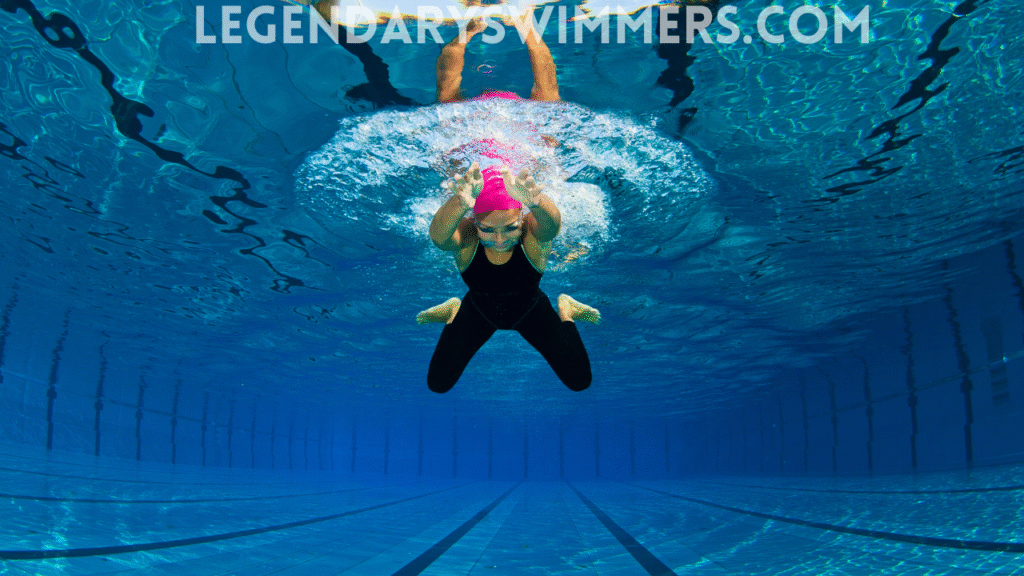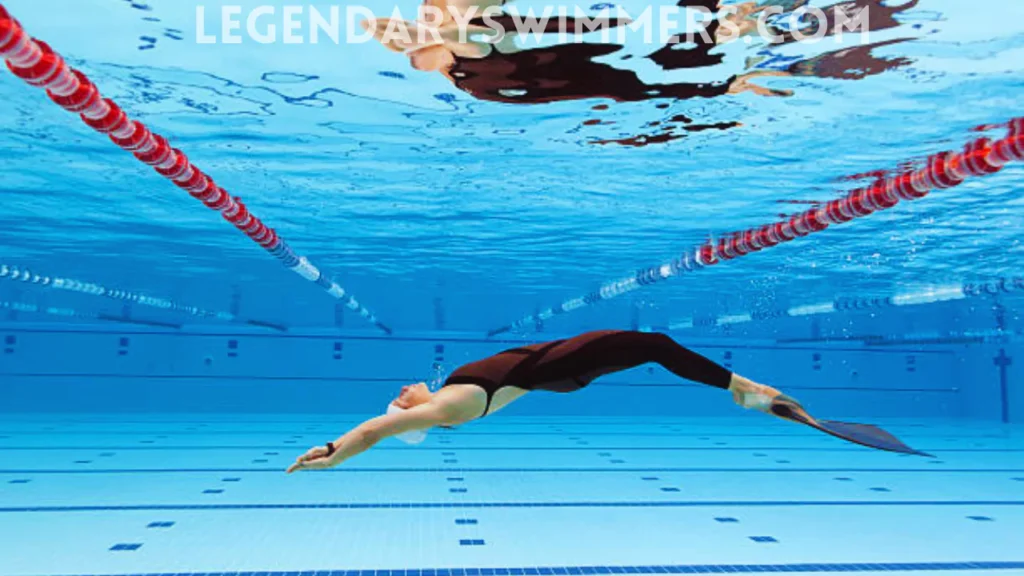
Latex vs Silicone Swim Caps: Which One Keeps Your Hair Tangle-Free
- Updated:
When deciding between latex and silicone swim caps, understanding their key differences can help you select the perfect cap for your swimming needs. Whether you’re a competitive swimmer or enjoy swimming recreationally, your choice of swim cap affects your comfort, performance, and hair care. This article dives into the advantages and drawbacks of both materials, provides expert insights, and offers practical advice for making the right choice.
Understanding Latex and Silicone Swim Caps
Latex swim caps are made from natural rubber, making them thin, lightweight, and flexible. They are popular among swimmers looking for a snug fit that stays put during high-speed swims. Latex caps are widely used by competitive and recreational swimmers because they are affordable and provide a secure grip.
What is a Silicone Swim Cap?
Silicone swim caps are thicker than latex and made from a synthetic, rubber-like material. Known for durability and comfort, silicone caps provide a smooth, seamless fit, making them a top choice for competitive swimmers. These caps are also easier to put on and less likely to snag hair, which is ideal for swimmers with longer hair or those who prioritize comfort over a tight fit.
Key Differences Between Latex and Silicone Swim Caps
To help you choose between latex and silicone swim caps, here are some notable differences:
| Feature | Latex Swim Caps | Silicone Swim Caps |
|---|---|---|
| Weight | Lightweight | Thicker and heavier |
| Comfort | Tight fit, snug | Molded for comfort |
| Ease of Use | Slightly sticky, tricky to put on | Easy, no snagging |
| Hair Snagging | Can snag hair | Rarely snags hair |
| Durability | Prone to tears, wears out quickly | Highly durable, lasts longer |
| Price | Inexpensive | More expensive |
| Competitive Use | Not ideal due to wrinkling | Recommended for a streamlined profile |
| Warm Water Swimming | Works well | May feel too warm |
| Cold Water Swimming | Limited protection | Offers insulation for colder waters |
Factors to Consider When Choosing Between Latex and Silicone Swim Caps
1. Swimming Style and Frequency
- Competitive Swimmers: Silicone swim caps are highly recommended for competitive swimming because of their sleek, hydrodynamic design. The smooth surface of silicone helps reduce drag, giving swimmers an edge in races. Additionally, their durability ensures they can withstand the rigors of frequent, high-intensity swimming sessions without tearing or degrading.
- Recreational Swimmers: If you swim occasionally or for leisure, latex swim caps can be a more practical choice. They are lightweight, affordable, and provide a snug fit for casual laps in the pool. Since wear and tear might not be as much of a concern for occasional swimmers, the shorter lifespan of latex caps is less of an issue.
2. Water Temperature
- Warm Water Swimming: Latex swim caps are thinner than silicone caps, which makes them more breathable and effective at allowing heat to escape. This makes them a great choice for swimming in warmer environments, such as indoor heated pools or tropical climates, where overheating might be a concern.
- Cold Water Swimming: If you swim in cooler environments—such as open water or outdoor pools during winter—silicone swim caps are ideal. Silicone’s thicker material provides excellent insulation, helping to retain body heat and keep your head warm. For even better protection, some swimmers layer a latex cap underneath a silicone cap for additional warmth and a secure fit.
3. Hair Type and Length
- Short Hair: For swimmers with short hair, both latex and silicone caps can work equally well. However, latex caps tend to provide a slightly tighter fit, which can be beneficial for ensuring the cap stays securely in place during vigorous activity.
- Long Hair: Swimmers with long hair may find silicone swim caps more convenient. The smooth texture of silicone makes it easier to put the cap on without snagging or pulling the hair. Silicone caps also tend to stretch more, accommodating voluminous or thick hair. Latex caps, on the other hand, can grip the hair tightly, which might feel uncomfortable or cause breakage. However, some swimmers with long hair prefer the secure hold of latex caps to keep hair firmly in place.
Tip for Long Hair: If you struggle with keeping long hair tucked away, look for swim caps specifically designed for long hair, often made with extra room or added stretch to accommodate ponytails or buns.
4. Budget
- Affordable Choice: If cost is a significant factor, latex swim caps are a budget-friendly option. They are inexpensive and widely available, making them an excellent choice for beginners, casual swimmers, or anyone looking for a short-term solution.
- Long-Term Investment: Although silicone swim caps come with a higher price tag, they are often a better long-term investment. Their superior durability means they can withstand frequent use, exposure to pool chemicals, and stretching without tearing, ultimately saving you money on replacements.
Additional Considerations:
- Allergies: If you have a latex allergy or are prone to skin sensitivities, silicone caps are a safer option. They are hypoallergenic and less likely to cause irritation.
- Environmental Impact: For eco-conscious swimmers, consider the environmental footprint of each material. Some brands now offer biodegradable latex caps as an alternative to traditional materials.
Expert Insights and Statistics
Studies show that competitive swimmers experience around a 4-7% reduction in drag by wearing swim caps, with silicone caps providing a slightly smoother surface due to their thicker material. According to the CDC, about 4.3% of people have a latex allergy, meaning silicone caps are a safer option for those sensitive to latex.
Olympic swim coach Greg Troy notes that “silicone caps offer better hydrodynamics for sprinting and are a smart choice for professional swimmers.” On the other hand, swim instructor Lisa Riley suggests that “latex caps are affordable, making them ideal for high school and recreational swimmers who need a quick and snug cap for training.”
Recommended Swim Gear from Legendary Swimmers
If you’re looking to elevate your swim experience, explore our range of high-quality swimming products designed for comfort and performance:
 Aqua Swim Bar: Ideal for strengthening core muscles and perfecting your strokes.
Aqua Swim Bar: Ideal for strengthening core muscles and perfecting your strokes.
 Shorty Wetsuit: A must-have for cold water swimming, offering insulation and mobility.
Shorty Wetsuit: A must-have for cold water swimming, offering insulation and mobility.
 Speedo Women’s Swim Goggles Mirrored Vanquisher 2.0
Speedo Women’s Swim Goggles Mirrored Vanquisher 2.0
Speedo Swim Training Kickboard Adult
FAQs
1. Do Latex Swim Caps Snag Hair?
Yes, latex swim caps can snag hair, especially if put on while dry. Sprinkling a little water on your head before putting on the cap or using talcum powder can reduce snagging.
2. How Long Do Silicone Swim Caps Last?
With proper care, silicone swim caps can last several years. They’re much more durable than latex caps, which can start to tear and lose elasticity over time.
3. Can Latex Swim Caps Cause Allergies?
Yes, some individuals are allergic to latex, which can cause skin irritation. Silicone caps are a safer alternative for those with latex sensitivities.
4. Are Swim Caps Necessary?
Wearing a swim cap is beneficial as it reduces drag, keeps hair out of the face, and provides some protection against pool chemicals. If you’re a daily swimmer, investing in a quality swim cap is recommended.
5. What Is the Best Swim Cap for Kids?
Silicone caps are generally better for children as they’re gentler on the skin and easier to put on.
Conclusion
Choosing the right swim cap can make a world of difference in your swimming experience, from comfort and performance to durability. At Legendary Swimmers Academy, we provide expert guidance, swimming lessons, and tips to help you elevate your performance in the water.
Explore our resources and discover how the right gear, like latex or silicone swim caps, can transform your swimming experience.

Natasha Nicole Leyva
Hi, I’m Natasha—swimmer, coach, and aquatic fitness enthusiast. My journey began in New Zealand after a professor recommended swimming to help with a knee injury. The low-impact nature of swimming worked wonders, and it quickly became my favorite form of exercise. This passion grew into a thriving swim academy, and soon, requests for aquatic fitness classes started pouring in. After becoming certified, I realized how powerful water workouts could be for recovery and fitness. Now, I share my expertise here to help others experience the benefits of aquatic movement—whether for recovery, fitness, or fun!








